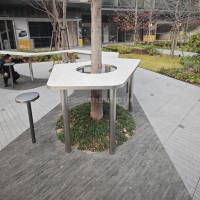Welcome to the website for landscape facilities products and knowledge.
How does the bin’s design prevent the waste from becoming a source of thermal pollution?
The design of modern waste bins plays a crucial role in preventing waste from becoming a source of thermal pollution. By incorporating heat-resistant materials such as insulated liners or double-walled construction, these bins effectively minimize heat transfer from decomposing waste to the surrounding environment.
Additionally, many eco-friendly bins feature ventilation systems that regulate internal temperatures, reducing the risk of heat buildup. Some advanced designs even utilize reflective coatings to deflect sunlight, further mitigating temperature increases.
Proper segregation of organic and inorganic waste also contributes to thermal pollution prevention, as it slows down the decomposition process and associated heat generation. By combining these innovative design elements, modern waste bins help maintain environmental balance while promoting sustainable waste management practices.
The integration of thermal barriers and smart material selection ensures that waste containers don't become secondary sources of heat pollution, making them an essential component in urban environmental protection strategies. These design considerations demonstrate how thoughtful engineering can address complex ecological challenges.
Related search:

Recommendation
An outdoor bar counter with stainless steel and terrazzo materials in an irregular shape